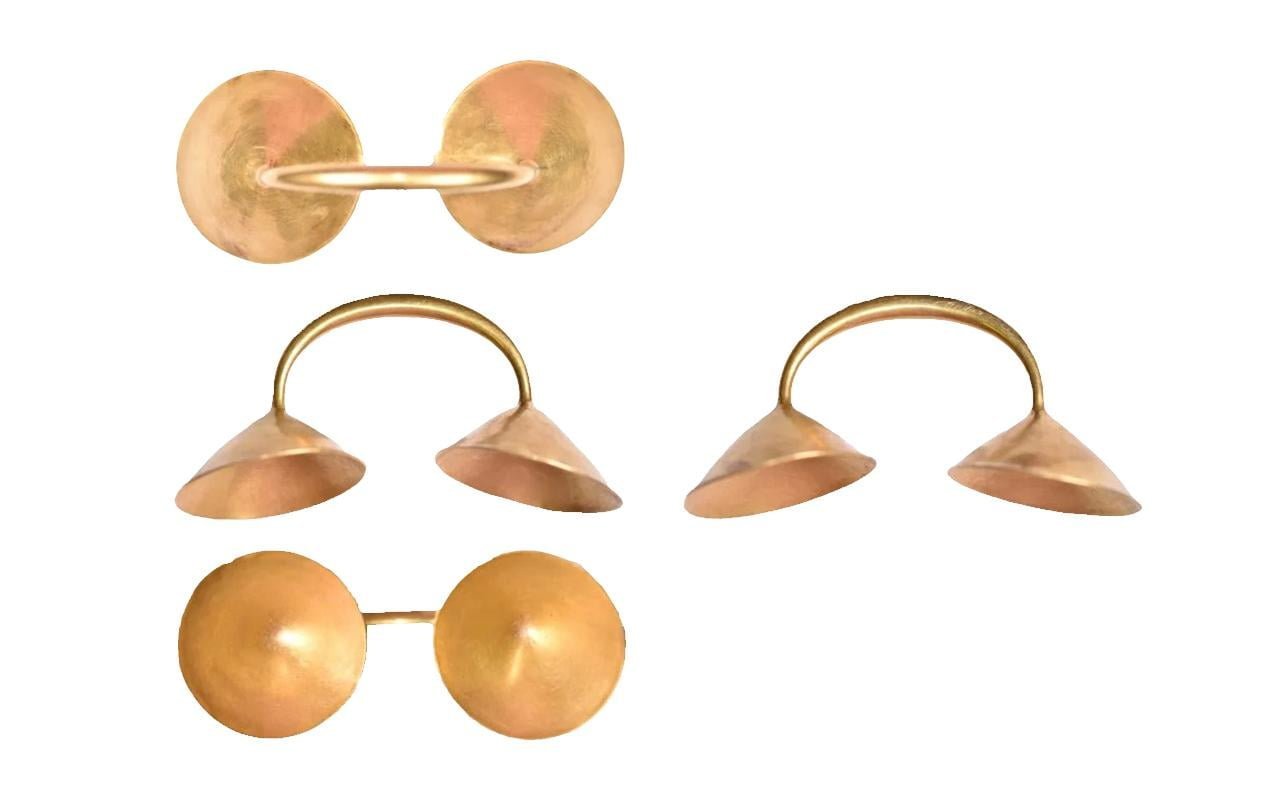The Portable Antiquities Scheme (PAS), overseen by the British Museum, has unveiled its annual report showcasing a wealth of archaeological treasures discovered throughout the UK.
The scheme, designed to facilitate communication between metal detectorists and relevant authorities, has not only strengthened the bond between archaeologists and enthusiasts but has also contributed significantly to the preservation of the nation’s heritage.
 The carved rosary bead was discovered at Queenhithe in the City of London with a face on one side and a skull on the other. Credit: The Trustees of the British Museum
The carved rosary bead was discovered at Queenhithe in the City of London with a face on one side and a skull on the other. Credit: The Trustees of the British Museum
The PAS, collaborating with 119 national and local partners, has meticulously documented over 1.5 million objects, making these records accessible to the public through an online platform.
The recently released annual report covering 2022 highlights the submission of 53,490 new discoveries, with a notable 94% reported by metal detectorists. Of these submissions, 1,384 have been categorized as treasure under the Treasure Act 1996.
Sir Mark Jones, the Director of the British Museum, expressed his support for responsible metal detecting, emphasizing the positive impact of the PAS in bringing archaeologists and metal detectorists closer together. “The degree to which the PAS has brought archaeologists and metal detectorists closer together for the benefit of our heritage cannot be overestimated,” stated Sir Mark Jones.
The geographical distribution of finds revealed that Lincolnshire, with 5,101 discoveries, led in the overall number of finds, closely followed by Norfolk (4,265) and Suffolk (2,727). Norfolk, in particular, emerged as a treasure trove, reporting 95 finds, outstripping other counties such as Hampshire and Kent.
One of the intriguing discoveries reported to the PAS in 2022 is a late medieval rosary bead, possibly dating back to 1450, found by Caroline Nunneley during mudlarking along the Thames in London. The exquisitely carved bone bead features twin designs—a female face, likely the Virgin Mary, on one side and a skull on the other, serving as a poignant “memento mori” to remind wearers of their mortality.
 A late Bronze Age dress fastener, measuring 127mm long, is one of only seven discovered in England and Wales. Credit: The Trustees of the British Museum
A late Bronze Age dress fastener, measuring 127mm long, is one of only seven discovered in England and Wales. Credit: The Trustees of the British Museum
Jonathan Needham’s remarkable find on New Year’s Day 2022 adds to the extraordinary discoveries. While metal detecting in Staffordshire with his friend Malcolm Baggaley, Needham unearthed a rare solid gold dress fastener dating to approximately 1000 BCE. The twin-cup design of the object initially sparked confusion, with thoughts of it being a drawer handle, but its golden brilliance led to the realization of its significance. Needham described the find as a “one in a billion chance.”
Norfolk’s prominence in the treasure list is attributed to various factors, including its historical richness, extensive plowed lands facilitating discoveries, and collaborative efforts with metal detectorists. The county reported a diverse range of finds, including a gold Roman ring with a red gemstone carved with a figure of the goddess Diana, reminiscent of the Thetford treasure hoard.
The British Museum also highlighted other significant discoveries, such as a late Bronze Age dress fastener found in Staffordshire and a hidden Iron Age hoard of 26 gold coins inside a flint container in West Berkshire.





